About 70% of Earth's surface is covered by water, and the coast, which forms the interface between land and water, is the site of an array of geomorphic processes and a range of landforms. For example, waves and tides involve movement and dissipation of large amounts of energy capable of causing rapid and spectacular changes in landforms along coasts. The following are driving forces that affect shorelines:
-
Article 1: Coastal Processes—Waves
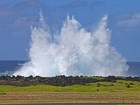
Waves are the dominant force driving the nature of a beach. The energy carried through waves moves beach sediment and transforms beach shape. Typically generated by wind, waves can travel thousands of miles across oceans before arriving at the coast where their energy is dissipated. Read more
-
Article 2: Coastal Processes—Tides
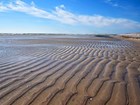
Formed by the gravitational forces of the moon and sun, tides are important in shaping beaches. Tidal range is largely determined by the slope of the continental shelf and arrangement of the coastline. Tidal ranges vary from less than a 1ft (0.3m) to more than 42ft (13m) and regulate the extent to which wave action and sediment-transporting tidal currents can alter the coastline. Read more
-
Article 3: Coastal Processes—Near-Shore Currents
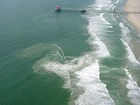
Like conveyor belts, currents move or transport sediment throughout coastal systems. Water from waves gets reflected off the shore and moves seaward and along the shore. Tidal exchange and submerged features direct water into fast flowing channels. These movements contribute to the removal and deposition of sediment along the coast; shaping sandy beach features such as barrier spits and sand banks Read more
-
Article 4: Coastal Processes—Shoreline Weathering
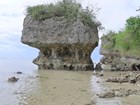
Characterized by the low water mark to the highest extent reached by waves and ocean spray, the shore is where the water meets the land. A shore zone may be subject to the same range of physical and chemical weathering processes that occur on land, but the presence of seawater and the cycle of wetting and drying produced by tides introduces additional significant factors. Read more
-
Article 5: Coastal Processes—Erosion
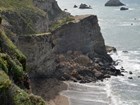
Coastal erosion is a continual process driven largely by wave action. Relentless energy transfer between waterbodies and land via waves and adjacent currents break down coastal features. The effectiveness of abrasion is highly dependent on the location of exposed material, its size, and composition. Read more
-
Article 6: Coastal Processes—Sediment Transport and Deposition
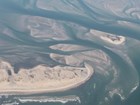
Wave action and currents move the water adjacent to shorelines. These processes mobilize sediment and suspend it in the water. From here, various currents transport sediment both locally and great distances. Material taken from one location becomes deposited elsewhere in an ever shifting system of sandy landforms. Read more
-
Article 7: Coastal Processes—Organic Activity
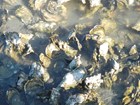
The extent of organic activity varies between coastlines and regions. Biological processes can both build and remove coastal structures. Organisms like mollusks and sea urchins erode coastal rocks while corals and oysters build protective structures. Coastal vegetation such as mangroves and halophytic plants help to stabilize coastlines and dune systems, and increase sediment deposition. Read more
-
Article 8: Coastal Processes—Changes in Sea Level
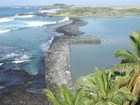
Relative sea level, or the height of the sea relative to land, determines the location of shorelines. The range in which coastal processes like waves, tides, currents, and surges affect the coast is related to mean sea level. In addition to altering the position and morphology of coastlines, a rise in sea level may cause coastal flooding, waterlogged soils, and destruction of coastal wetlands and salt marshes. Read more
